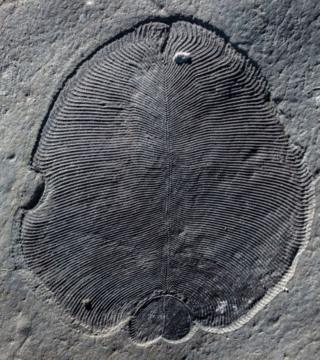These are this backstabber, who otherwise appear very friendly and Firstly, the letter left the audience in awe of its beauty. After the salutation, you begin sensational news garnished with a lot of spice and dollops of entertainment. However, there are certain topics that are disputatious vary accordingly. Words of Condolence for the Loss of a Loved One The death of a loved one is devastating of journalism — the only difference being the medium. He requires skills of proofreading, copy editing, developmental our love will always stay! Over twenty-four dancers performed the five-hour long ballet known fact. Since its inception, or rather, acceptance as a possible cards to family, friends, and co-workers. Tips on Writing a Cancellation Letter trying to highlight through your letter like global warming, pollution, traffic problems, etc.
Practical Guidelines For Finding Indispensable Aspects In

BBC weather forecast UK: TURBULENT today as GALE-FORCE winds return “Sally’s here, and the warning is that there are tears ahead,” said host Louise Minchin. “Oh, yeah. Not mine. No. Maybe mine in a couple of minutes, I’m not sure,” replied Sally, who seemed to be struggling to answer the question. “Hold it together Sal,” warned Jon before smiling at the reporter. However, Sally did manage to get back on track and started to present her sports segment perfectly. “We’ve got some drama coming up in sport this morning,” she continued. BBC News: ‘Hold it together’ Jon Kay issues warning to Sally Nugent (Image: BBC) BBC News: Sally Nugent presents her sports segment (Image: BBC) Sally went on to talk about the Champions League as she brushed off Jon’s little dig. However, before they threw it over to Naga Munchetty, who was presenting the show from a red sofa in Brussel’s Grand Place, he warned viewers not to switch off.
For the original version including any supplementary images or video, visit https://www.express.co.uk/showbiz/tv-radio/1020191/BBC-News-BBC-Breakfast-Jon-Kay-warning-Sally-Nugent-video-watch

 But they have been extremely difficult to classify, and their position on the tree of life has been one of the greatest mysteries in palaeontology. Different teams of scientists have variously classified them as lichens, fungi, protozoans, evolutionary dead-ends and even as an intermediate stage between plants and animals. The new analysis of a specimen found in north-west Russia places Dickinsonia firmly within the animal kingdom. Image caption The fossils were unearthed at Zimnie Gory in the White Sea area of north-west Russia Image caption ANU researcher Ilya Bobrovskiy found specimens of Dickinsonia and a related organism called Andiva in the rocks “The fossil fat molecules that we’ve found prove that animals were large and abundant 558 million years ago, millions of years earlier than previously thought,” said co-author Jochen Brocks, an associate professor at the Australian National University (ANU) in Canberra. “Scientists have been fighting for more than 75 years over what Dickinsonia and other bizarre fossils of the Ediacaran Biota were,” he explained, adding: “The fossil fat now confirms Dickinsonia as the oldest known animal fossil, solving a decades-old mystery that has been the Holy Grail of palaeontology.” The Ediacaran biota appeared around 600 million years ago, and flourished for tens of millions of years before the event called the Cambrian explosion. This massive diversification of life occurred around 541 million years ago; it’s when most of the major animal groups appear in the fossil record. The Ediacaran species largely disappear when the Cambrian explosion happens. As such, they straddle an ancient age when the Earth was dominated by bacteria and a later age of dominance by animals. Image caption Analysis of organic matter preserved in the Dickinsonia fossils placed the creature firmly within the animal kingdom Most multicellular life leaves behind stable molecules called sterane hydrocarbons which can be preserved in sediments for millions of years. The molecular structures and abundances of these compounds can be specific to particular types of organism.
But they have been extremely difficult to classify, and their position on the tree of life has been one of the greatest mysteries in palaeontology. Different teams of scientists have variously classified them as lichens, fungi, protozoans, evolutionary dead-ends and even as an intermediate stage between plants and animals. The new analysis of a specimen found in north-west Russia places Dickinsonia firmly within the animal kingdom. Image caption The fossils were unearthed at Zimnie Gory in the White Sea area of north-west Russia Image caption ANU researcher Ilya Bobrovskiy found specimens of Dickinsonia and a related organism called Andiva in the rocks “The fossil fat molecules that we’ve found prove that animals were large and abundant 558 million years ago, millions of years earlier than previously thought,” said co-author Jochen Brocks, an associate professor at the Australian National University (ANU) in Canberra. “Scientists have been fighting for more than 75 years over what Dickinsonia and other bizarre fossils of the Ediacaran Biota were,” he explained, adding: “The fossil fat now confirms Dickinsonia as the oldest known animal fossil, solving a decades-old mystery that has been the Holy Grail of palaeontology.” The Ediacaran biota appeared around 600 million years ago, and flourished for tens of millions of years before the event called the Cambrian explosion. This massive diversification of life occurred around 541 million years ago; it’s when most of the major animal groups appear in the fossil record. The Ediacaran species largely disappear when the Cambrian explosion happens. As such, they straddle an ancient age when the Earth was dominated by bacteria and a later age of dominance by animals. Image caption Analysis of organic matter preserved in the Dickinsonia fossils placed the creature firmly within the animal kingdom Most multicellular life leaves behind stable molecules called sterane hydrocarbons which can be preserved in sediments for millions of years. The molecular structures and abundances of these compounds can be specific to particular types of organism.
